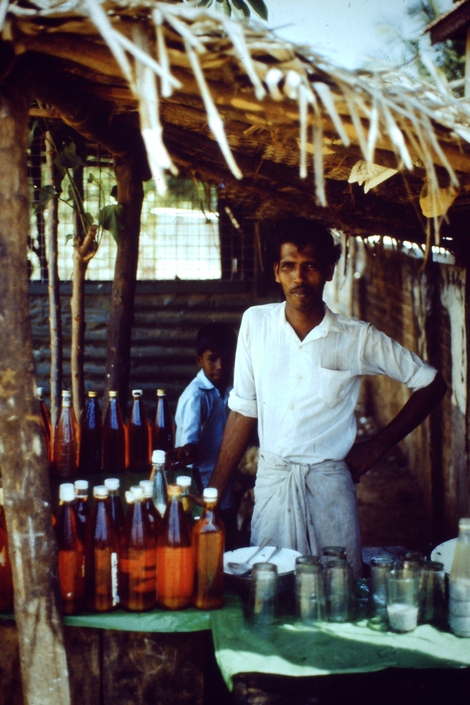"who is still alive..... - who is still smiling......"
People in Sri Lanka - photos by Harald Haeuser 1980-1983 (copy right)
From 1983, ethnic tensions were manifested in on-and-off insurgency against the government by the Liberation Tigers of Tamil Eelam (LTTE). Following the riots in July 1983, more than 150,000 Tamil civilians fled the island, seeking asylum in other countries. Lapses in foreign policy resulted in neighbouring India strengthening the Tigers by providing arms and training. In 1987, the Indo-Sri Lanka Accord was signed and Indian Peace Keeping Force (IPKF) was deployed in northern Sri Lanka to stabilize the region by neutralising the LTTE. The same year, the JVP launched its second insurrection in Southern Sri Lanka, necessitating redeployment of the IPKF in 1990 In 2002, the Sri Lankan government and LTTE signed a Norwegian-mediated ceasefire agreement.
Sri Lanka was affected by the devastating 2004 Asian tsunami, which left at least 35,000 people dead. From 1985 to 2006, Sri Lankan government and Tamil insurgents held four rounds of peace talks without success. Both LTTE and the government resumed fighting in 2006, and the government officially backed out of the ceasefire in 2008. In 2009, under the Presidency of Mahinda Rajapaksa the Sri Lanka Armed Forces defeated the LTTE, and re-established control of the entire country by the Sri Lankan Government. Overall, between 60,000 and 100,000 people were killed during the 26 years of conflict. An Expert Panel convened by the U.N. Secretary General reported that at least 40,000 Tamil civilians may have been killed in the final phases of the Sri Lankan civil war. Following the LTTE's defeat, the Tamil National Alliance, the largest political party in Sri Lanka, dropped its demand for a separate state in favour of a federal solution. The final stages of the war left some 294,000 people displaced. According to the Ministry of Resettlement, most of the displaced persons had been released or returned to their places of origin, leaving only 6,651 in the camps as of December 2011. In May 2010, President Rajapaksa appointed the Lessons Learnt and Reconciliation Commission (LLRC) to assess the conflict between the time of the ceasefire agreement in 2002 and the defeat of the LTTE in 2009. Sri Lanka has emerged from its 26-year war to become one of the fastest growing economies of the world. ( wikipedia)
